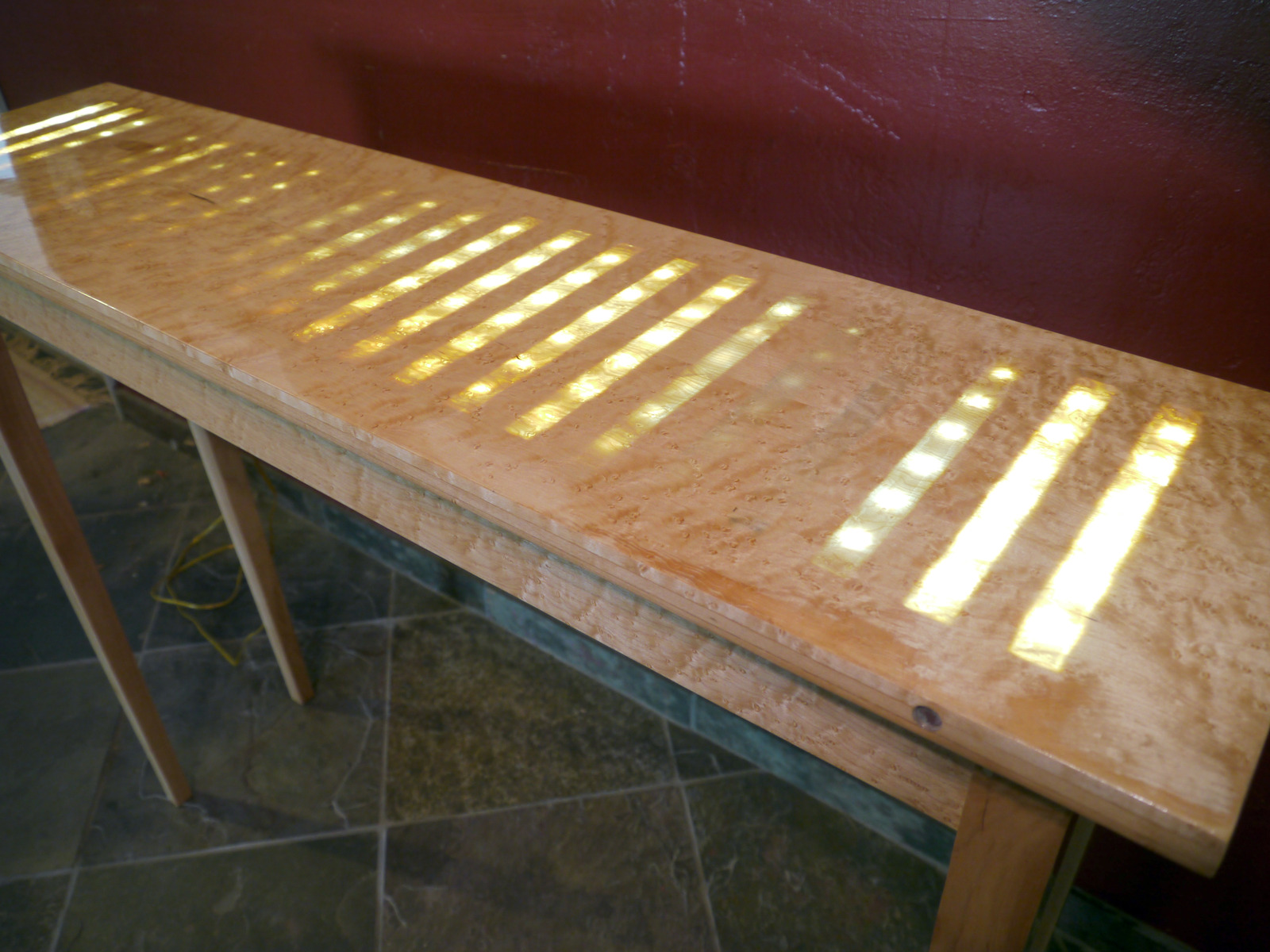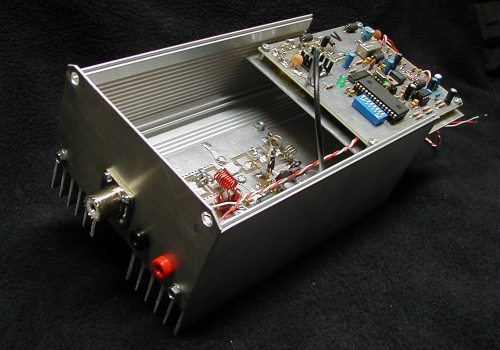
Alex Schlegel‘s Day Table uses a photoresistor located in one corner, and eight ShiftBars (for a total of 24 channels) connected to an Arduino to play back the sunlight that fell on the table during the course of the day.
Macetech built this table to demo their shiftbrite RGB LEDs and a Seeeduino. It’s a 9 x 9 grid, but since each LED has its own controller, the cost quickly climbs.

While not a table, Dave Clausen‘s LED Cylinder is a good resource for discussing how to wire up set of addressable RGB LEDs, along with some good resources to parts and the like.
Recently I’ve been thinking about a LED displays. Originally, I was thinking about a full 640 x 480 display, but after doing the math, that idea quickly shrank to a more manageable 32 x 24 display. While part of me thinks that having one of these tables would be interesting, I can’t help but think that in reality they’d just be ugly and too bright.
I started to think about LED displays because my “coffee table” (It’s actually more an end table.) has a glass top and holes cut out in the back for electrical cables to pass through. What I really want is a multitouch display like either of these two guys are building. However, a multitouch is still pretty hacky and more DIY than I want right now. I like the idea of owning one of these tables, I just don’t want to build it.


